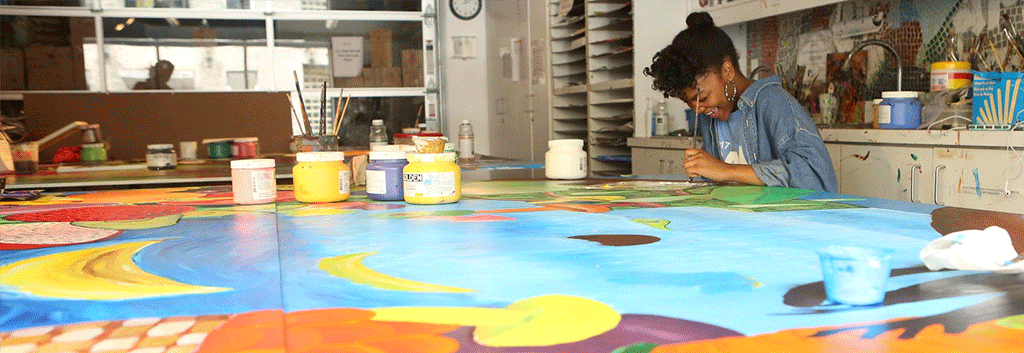
Blog
Artist Feature: Leslie Espino
As part of our month-long Earth Day celebration, we place importance on connecting with emerging artists to give their perspective on practicing sustainability in the arts. Recently, we met with Houston-based mixed media artist, Leslie Espino, to discuss repurposing material, embracing artistic mistakes, and reimagining places as safe spaces.
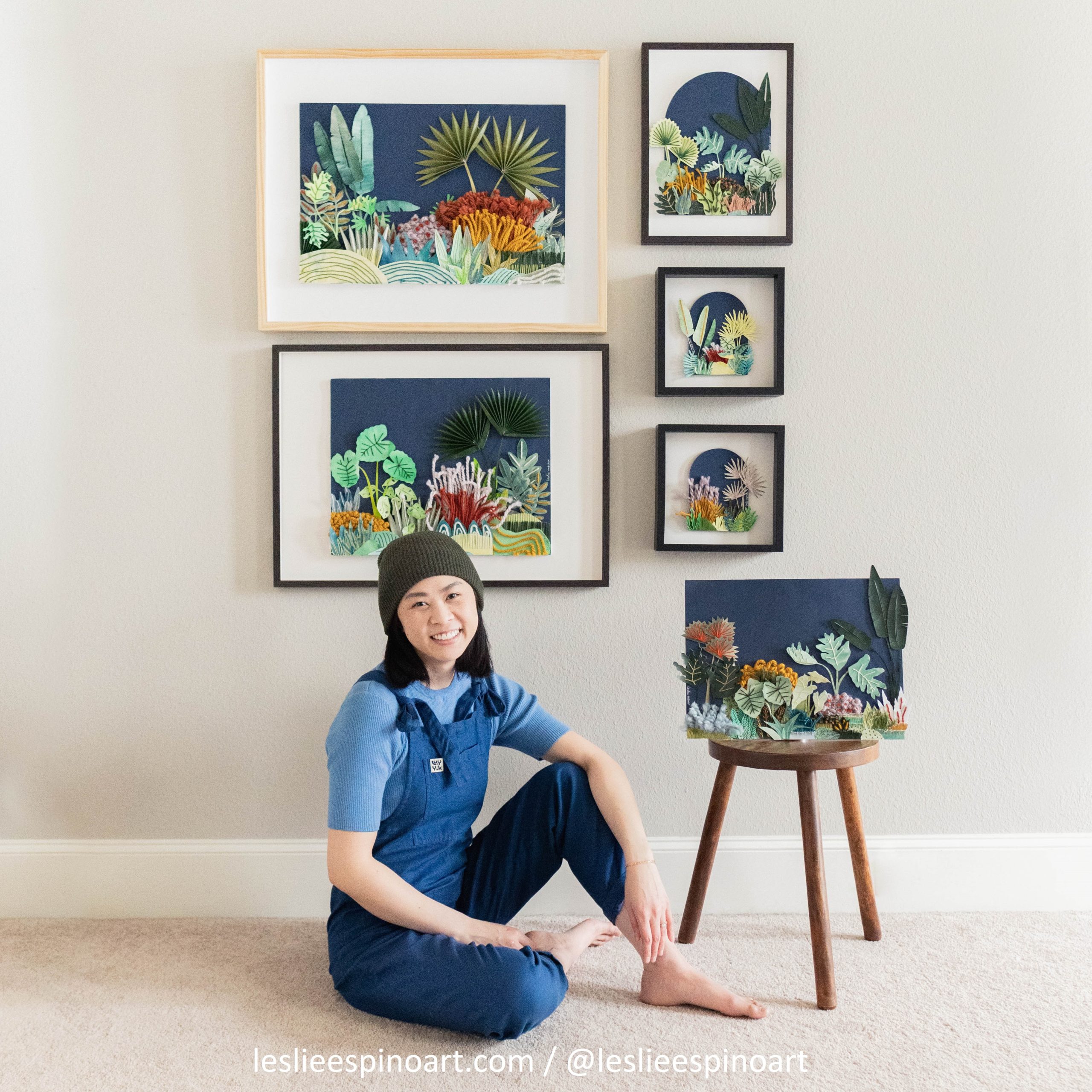
What kind of art do you produce?
I make paper and fiber art from recycled materials. It’s not all recycled material, it’s both new and recycled. You’ll find a lot of trash in my artwork and a lot of new stuff. I’m an environmental scientist so I love having that bridge between my artwork, which is more creative than the science work. I just like having the environmental aspect connect the two. It’s illustrative, storybook style, nature inspired, paper artwork.
How did you get started in making art?
I started because I wanted an outlet. I was looking for relief from pressure at work. I’m a woman in a STEM field, which is notoriously unwelcoming to women. I wanted something that would free me from that. There are a lot of expectations of how you’re supposed to behave, what roles you can and cannot do, and a lot of other things that come with it, but I love what I do. Even though my current role at NASA is something I absolutely love, it’s not the same as my past experience. I was really forged in that high pressure environment, so it changed my mentality, which is unfortunate, but now I’ve internalized that pressure from before, and it’s come out in my own expectations of myself. When I started art, I really wanted a space that was safe from that. Where I would be free to create without any expectation whether it was my own or anybody else’s.
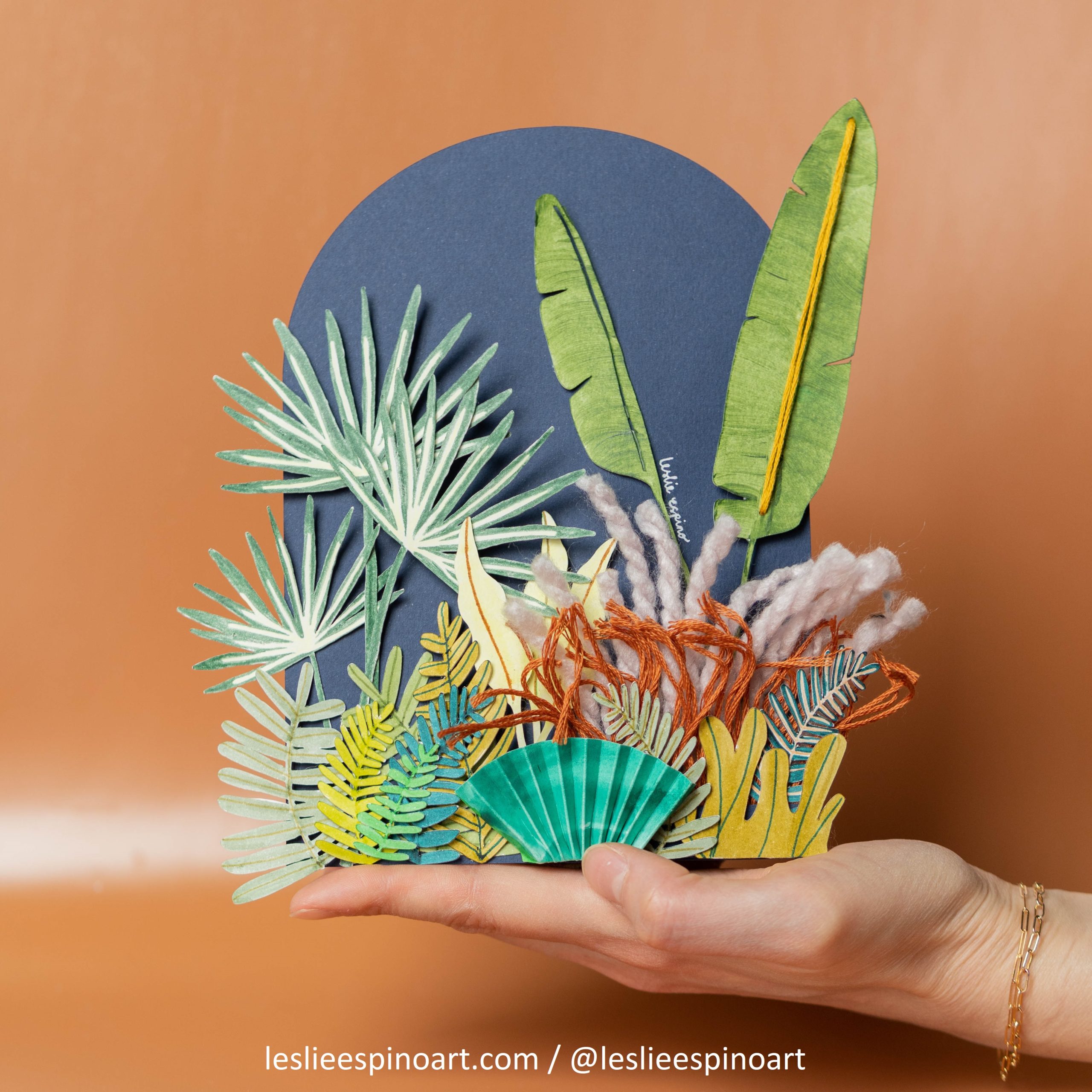
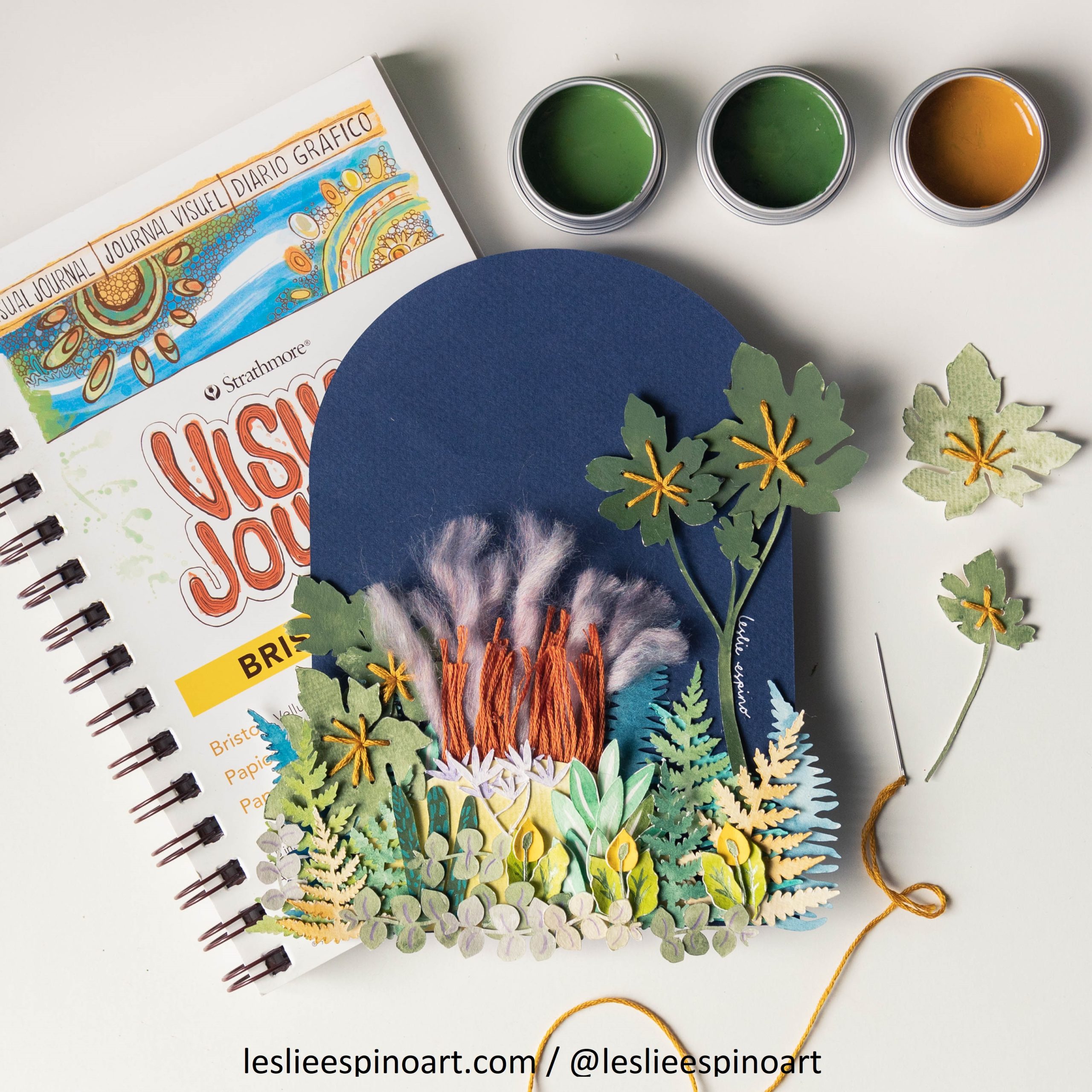
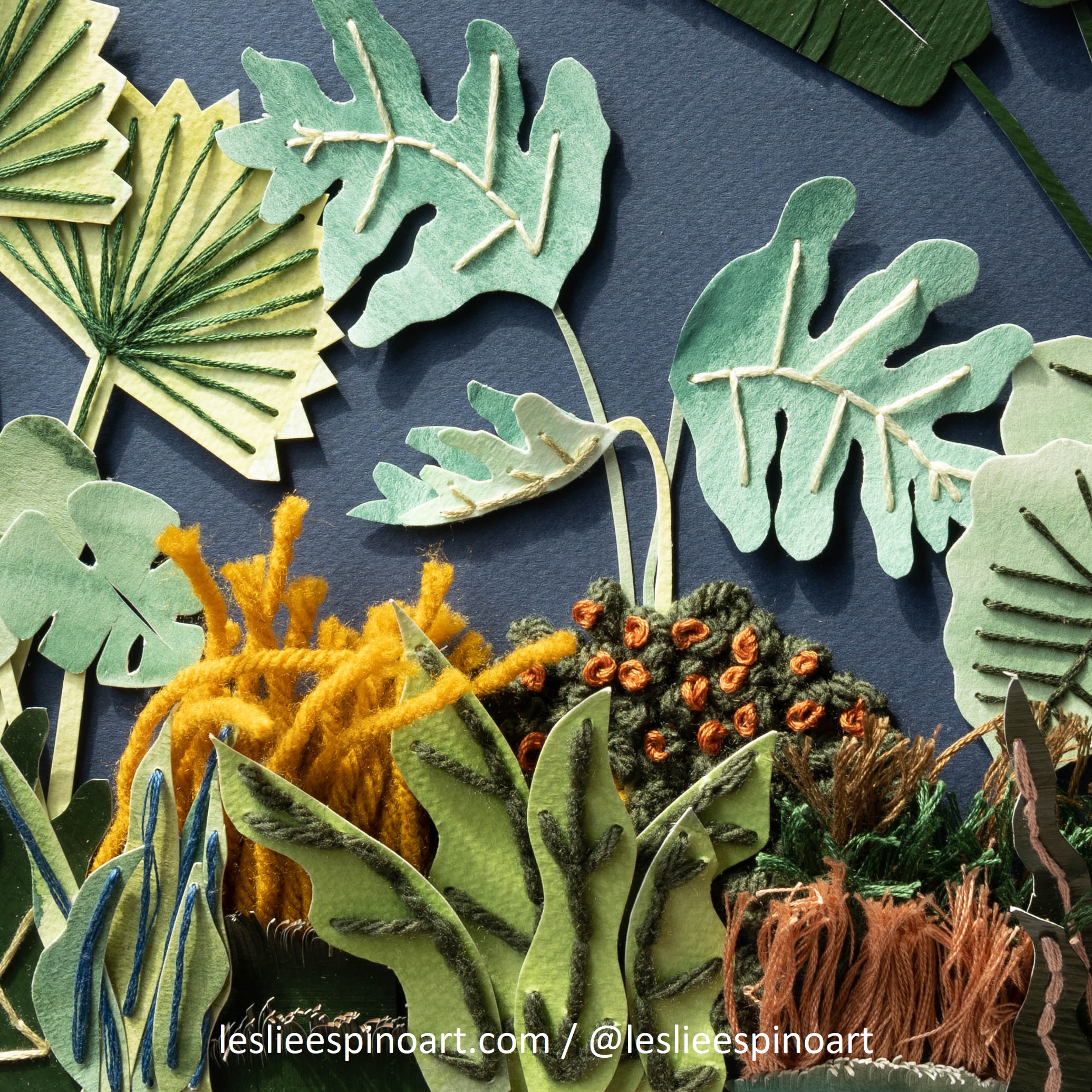
Can you tell us about the materials and mediums you use to explore your creativity?
I use a lot of repurposed paper and fiber, I also use new materials like paper and paint. A lot of that material comes from me because I make a lot of mistakes when making art, which is just part of the process. Because I come from the perspective of wanting a free space, I also want to be free to make those mistakes without getting caught up in my head and something not turning out the way I wanted. A lot of times the materials that are repurposed are old paintings that I messed up, and I kept those paintings because as an environmental scientist I try to be conscious of the waste I produce. The whole sustainable art thing came together when I figured out what to do with the mistakes and material that I didn’t want to throw away. I flip a lot of those older paintings around on the back or cut them up, and I use them as-is in my pieces. I enjoy having the connection of my earlier work still present in my newer work now that I’ve found my style, and I love the process of taking trash and turning it into something for people to enjoy.
“I like recreating these places I see, and reimagining them as safe spaces.”
Leslie Espino
What was your older work like?
I used to do a lot of traditional watercolor paintings, like landscapes. I wasn’t really happy with that style just because I didn’t see it fitting into my life at home. I felt I should be creating something that’s really for me. I’ve found a style that I like and I’m pleased to hang up and surround myself with it.
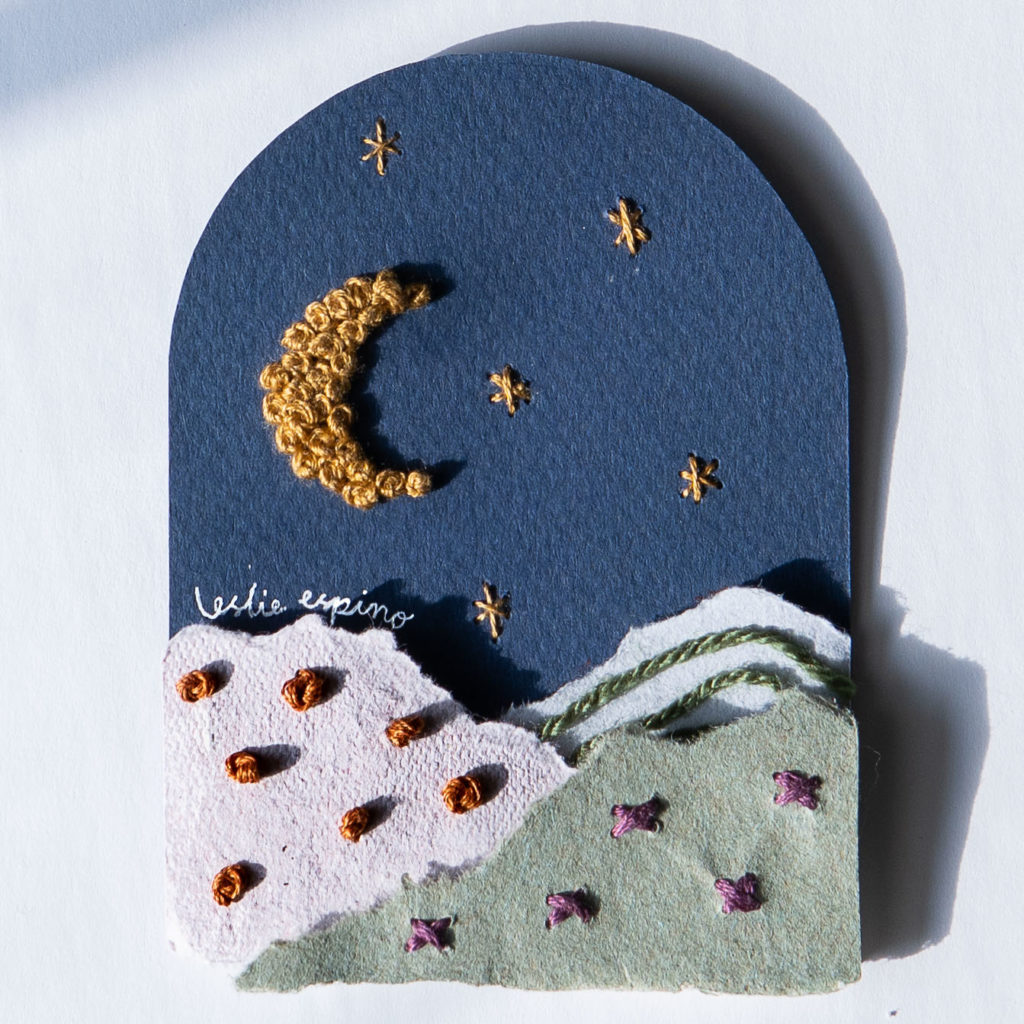
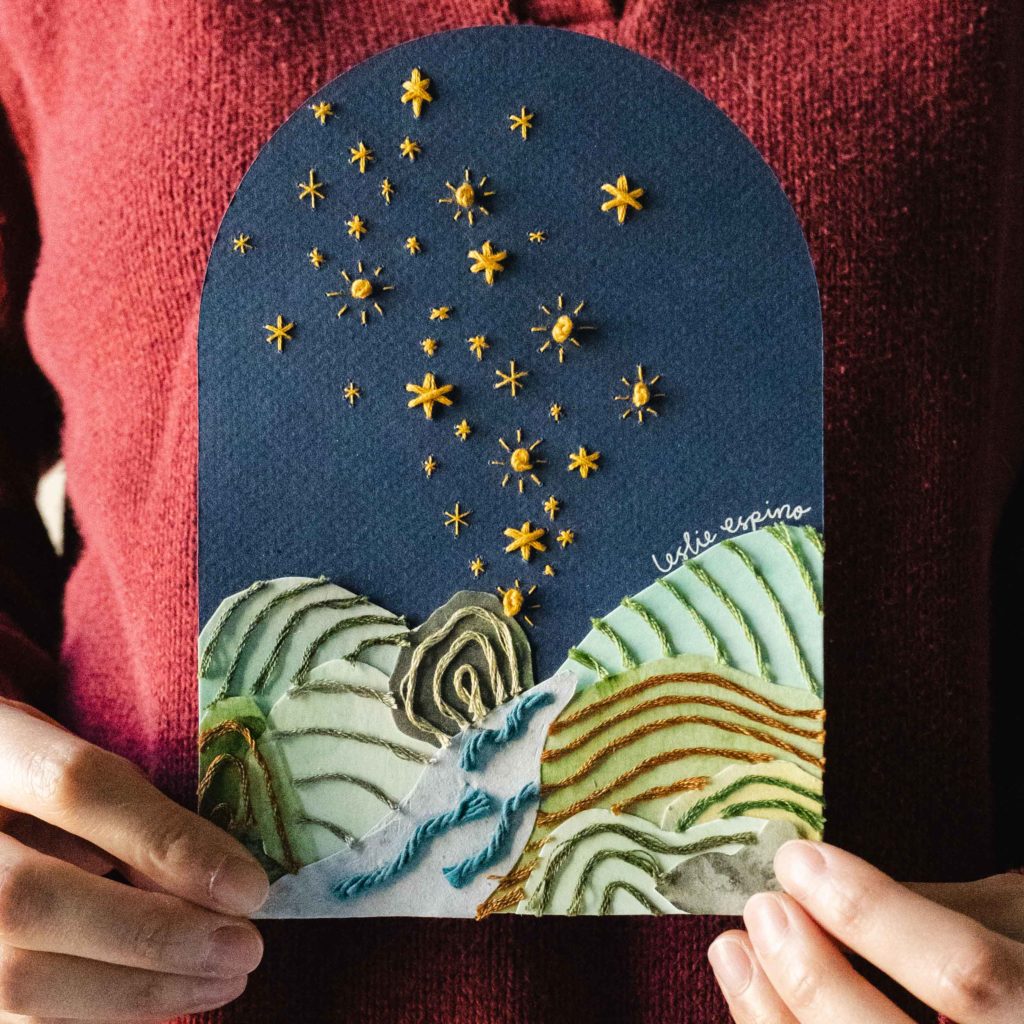
Where do you find inspiration?
I find inspiration in my environment. I used to take landscape photos of my trips, and recreate those pictures as paintings. I live in Houston, which is not that green. Visually, there aren’t many big green spaces, but it makes me really appreciative of the few green spaces we do have. I feel like there are rare gems of nature, and for me, they represent a place where you can mentally let go and exist. I like recreating these places I see, and reimagining them as safe spaces.
What connects you to your work?
I feel like my art helps give me perspective in two main ways. First, I am reimagining the world that I see as a place where everybody is welcomed. No pressure, no expectations, or any environmental crisis. It’s all the same world, but it’s safe and insulated from that when I recreate these spaces. In environmental science, it is really easy to get stuck in this mindset that the world will fry into a burnt raisin, like tomorrow. That’s a negative headspace because it feels like there’s not a lot we can do about it, but reimagining everything as a safe space helps me stay motivated and also appreciative of everything that currently exists.
Second, I am literally imagining trash into art, so working with repurposed materials comes with its own issues. You have to troubleshoot a lot of the time because these aren’t new, you have to retroshoot them back into the purpose with a new perspective. You have to be able to look at something not in its current state, but look at something for the potential it could be. I think that openminded-ness to potential is something I want to share. I’m showing people that we can rethink waste. Not everything has to be single use.
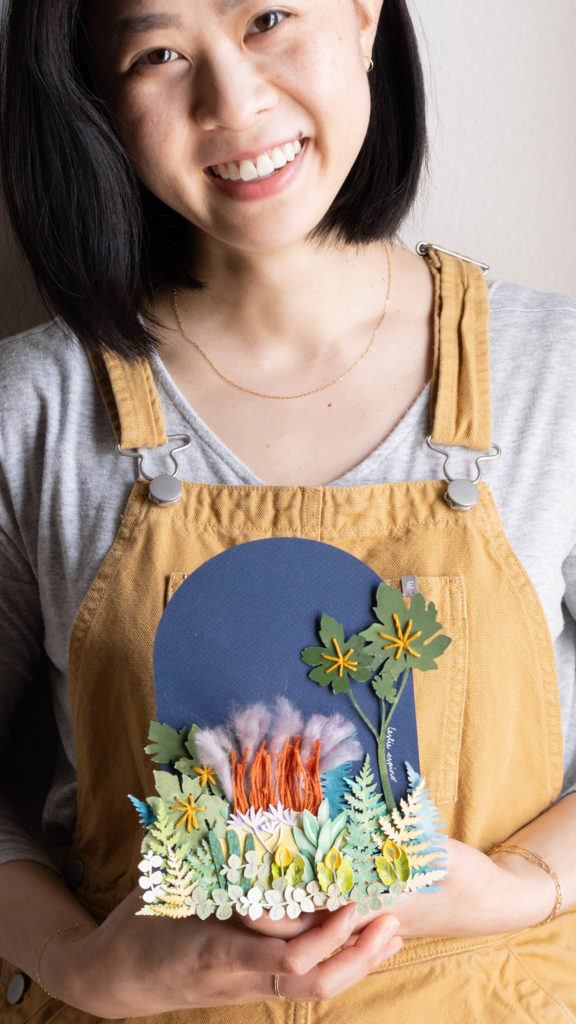
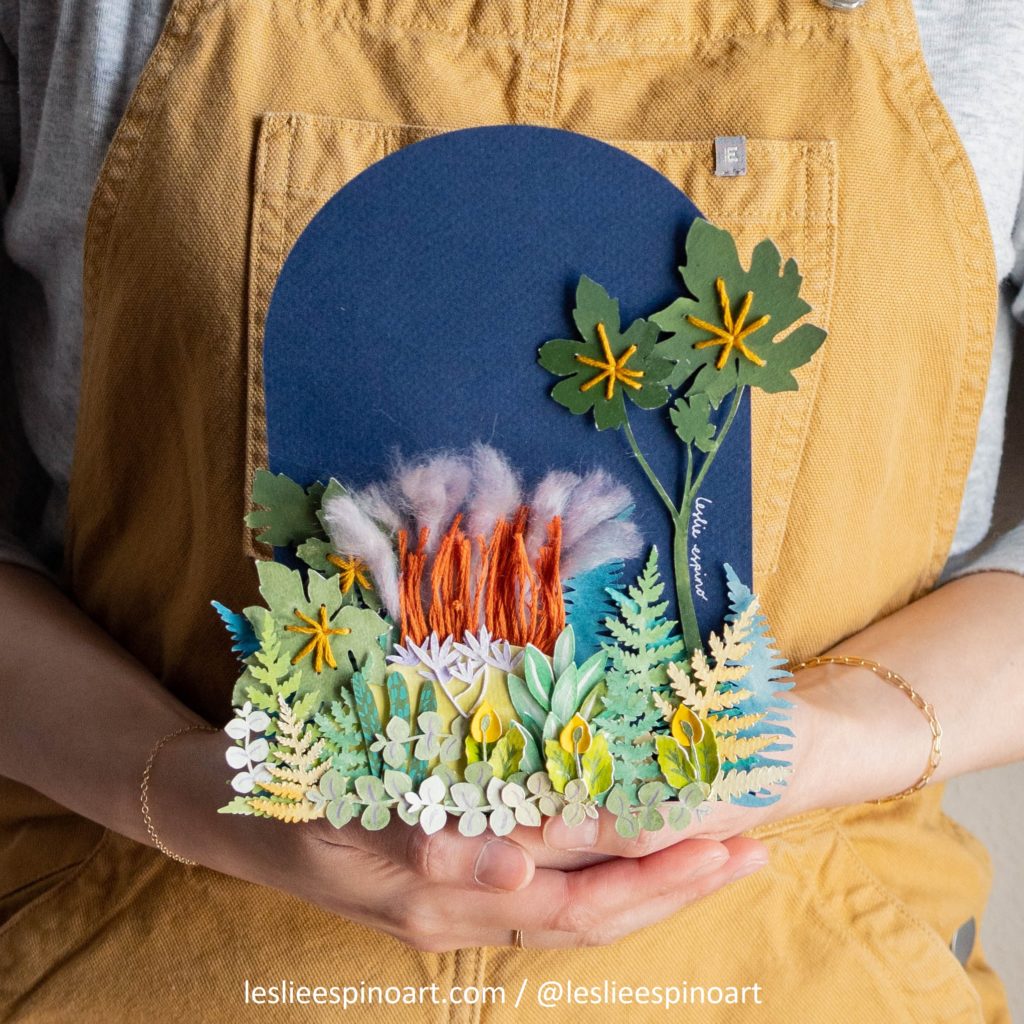
Can you explain the importance of practicing art in the STEM Field?
STEM is really cool because you get to figure out how things work, and then you see it in action. There are a bunch of these theories that seem like they aren’t tied to anything, but then you see it all come together and it’s cool. To the general public, a lot of that is inaccessible because these theories are really abstract and difficult to digest. There’s just a lot of background knowledge that goes into scientific theories that people start glazing over because it’s an indigestible amount of information. That’s where art comes in because art has the ability to show people without having the words or theories to back up a concept.
Art is an under-utilized tool with STEM. I feel like if there was a Worldwide STEM organization, and if they got their PR on it to hire a bunch of artists, we would be in a better environmental position, and the public would be more engaged.
What encouragement would you give artists for overcoming creative blocks and barriers?
If it’s an internal block, I always pivot, because I cannot force it. I try to protect my sacred space when I’m creating, and if it becomes something I’m not enjoying, then I take a step back. The nice thing about creativity is it’s super flexible. You can be creative by making art, or cooking. There are tons of ways you can be creative, and you can still scratch that itch without getting upset, and come back to it later. I feel like being okay with the evolving nature of creativity is good.
If it’s an external block, like not getting your artwork accepted into a gallery, then I always play with the “What If” game, and I keep knocking out the obstacle until I get where I want. It’s a really interesting process, I recommend going through all the possible failures you could face, and then seeing where you could end up. It’s a backwards way of solving problems, but it works.
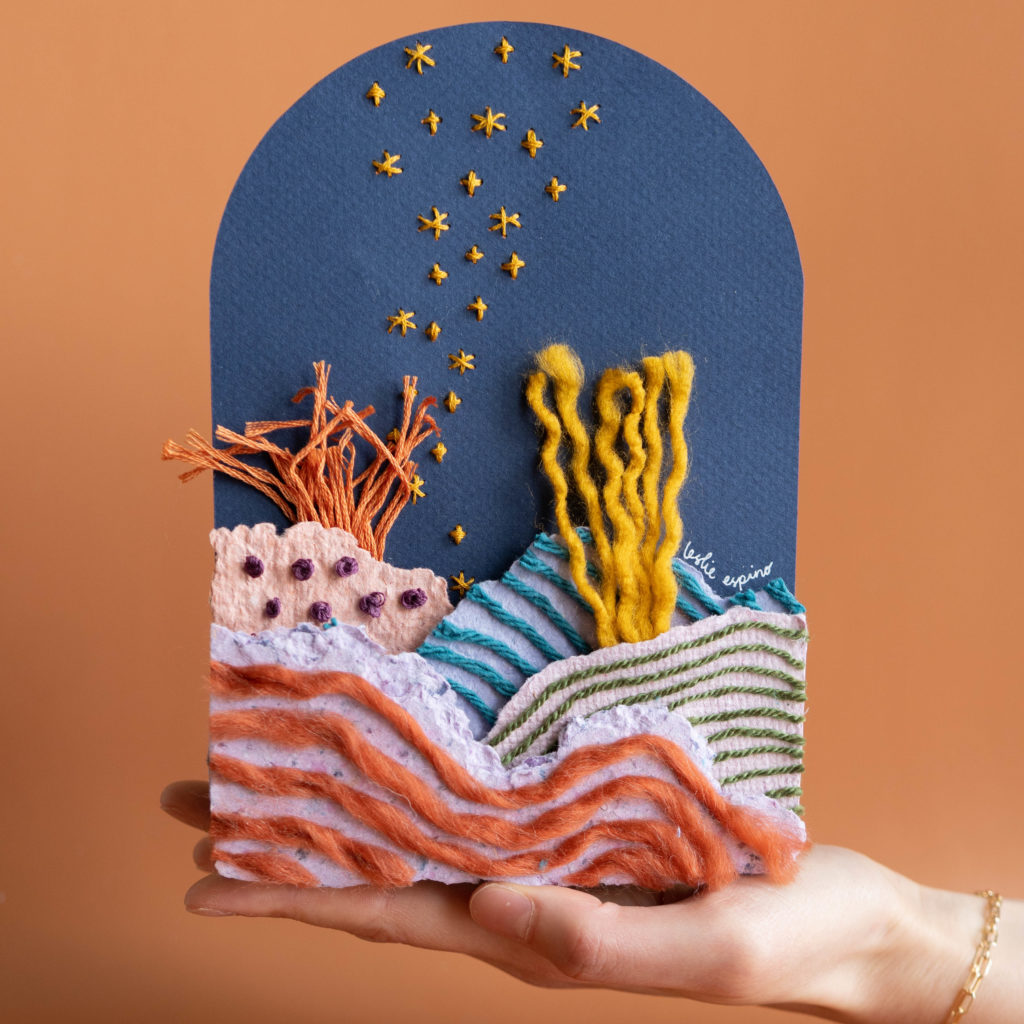
Is there anything else you’d like to say?
I want people to look at my art and be surprised it’s made from trash, and by looking at my artwork, it makes us think about sustainability and the ways we can incorporate it into our lives more.
To see more of Leslie’s artwork, please visit her website and follow her art pages on Instagram and Facebook.
Currently, Leslie is open for commissions, and she loves hearing new ideas and recreating locations (special vacations, honeymoons, etc.).

